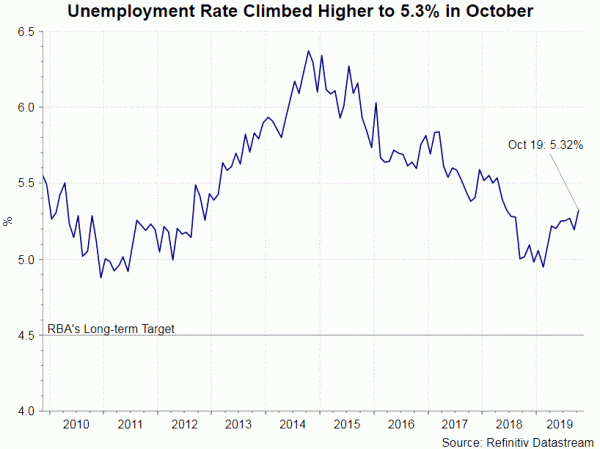RBA’s minutes for the November meeting sent a more dovish tone than expected. At the Statement of Monetary Policy, the members noted that “the Board was mindful that rates were already very low and that each further cut brings closer the point at which other policy options come into play”. This message sounded like the central bank might stand on the sideline for some time. However, the minutes revealed that the members remained concerned about sluggish economic developments despite previous rate cuts. Given the disappointing employment report for November, it appears that the chance of further easing has increased.
Although the members left the policy rate unchanged at the meeting, they admitted that “a case could be made to ease monetary policy”. The members acknowledged that the gradual progress towards RBA’s goals has been “only gradual”. They refrained from easing further this month because of the concerns about “the negative effects of lower interest rates on savers and confidence”. They, however, retained the view that lower interest rates could support economic growth via traditional channels, such as “a lower exchange rate, higher asset prices and higher cash flows for borrowers. Yet, the members also discussed the impacts of further easing on market confidence.
At the concluding statement, RBA affirmed that “an extended period of low interest rates” is needed for the unemployment rate to fall to the target level (4.5%)and inflation to strengthen. The members noted that they were “prepared to ease monetary policy further if needed”.
The latest employment report suggests that further easing is increasingly likely. In October, the unemployment rate climbed higher, by +0.1 percentage point, to 5.3%. The increase is in particular worrisome as the participation rate slipped during the month. The number of payrolls dropped -19K, compared with consensus of a +15K addition and a +12.5K increase in October. In a separate report, wage growth eased to +2.2% y/y in October, from +2.3% in the prior month. Weakness in the job market suggests that the central bank would have to adopt further easing in coming months.














